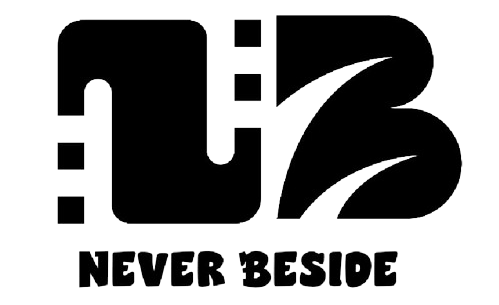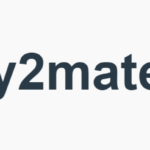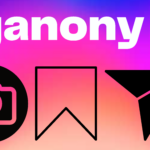Key Indicators and Charts in Futures Trading

Futures trading is a lively and profitable field, drawing traders looking for chances to make money in different finance markets such as commodities, currencies or stock indices. Traders depend on a variety of tools and methods to handle the complexities of futures trading; important indicators and charts are among these. So, open stock trading account to get access to all these tools. This article will look into the necessary indicators and charts used in futures trading, discussing their importance and how they can be applied practically.
Understanding futures trading
To start with, let’s first get a basic understanding of futures trading before we explore key indicators and charts. In simple terms, a futures contract refers to an agreement that states one party will sell an asset while the other party agrees to buy it at a specified price on a certain date in the future. Trading in futures is about making predictions on how these contracts’ prices will change over time; traders do this hoping they can make money from price ups and downs.
Key indicators in futures trading
Moving averages
Moving averages are one of the most commonly used indicators in futures trading. They make price data smoother by finding the average price over a certain time, like a 10, 50 or 200-day period. These moving averages help traders to spot trends and possible changes in trends within the market. Moving averages are classified into two main types: simple moving averages (SMA) and exponential moving averages (EMA).
Relative strength index
The RSI acts similarly to a speedometer for price movements. It measures the strength and change of these, providing information on conditions in the market that might be overbought or oversold. The RSI values range from 0 to 100, and when it goes above 70 there is a possibility an asset could be too much bought while if it drops below 30 this signifies possible overselling conditions in the marketplace.
MACD
MACD is a trend-following momentum indicator that displays the relationship between two moving averages of an asset’s price. It has three main parts: the MACD line (the distinction between a short-term and long-term EMA), a signal line (a smoothed moving average on top of MACD), and a histogram which shows the difference among these two lines – it can be positive or negative depending on if you are above or below zero. People who trade use the MACD to find changes in momentum and possible trend reversals.
Bollinger bands
Bollinger Bands have a middle band, which is basically a simple moving average, and then there are two outer bands that get placed two standard deviations above or below the middle band. These Bollinger Bands stretch and shrink according to how much volatility is present in the market. Traders use Bollinger Bands to find out if conditions are overbought or oversold, along with understanding how volatile the market might be.
Volume
Volume is a very important sign in futures trade, showing how many contracts are traded during some time. When there is a big volume, it usually comes with powerful price actions and this shows more people joining the market and possibly confirming a trend. Traders study patterns of volume to confirm movements in price, as well as evaluate feelings within the market.
Essential charts in futures trading
Candlestick charts
Candlestick charts show how prices changed in a certain time span. Every candlestick represents the beginning, highest point, lowest low and ending price for that period. Candlestick patterns are helpful tools to understand market feelings and possible changes in prices. Some typical candlestick patterns include doji, hammer, engulfing and morning star.
Bar charts
Bar graphs are like candlestick charts, but they use bars to show price data. The length of each bar shows the high, low, open and closing prices for a particular timeframe. These kinds of charts can help in understanding price patterns as well as pinpointing important support or resistance levels.
Line charts
Line charts are made by joining the end prices of an asset for a set time. This results in a continuous line that gives a simple view of how the price changes over this period. Line charts are frequently used to spot long-term patterns and also detect levels of support and resistance.
Renko charts
Renko charts show changes in price not by time-based intervals but by bricks (or blocks). Each brick stands for a certain set price movement like points or ticks. Renko charts help to eliminate unwanted noise and emphasize important price trends, which makes them beneficial for studying trends and following strategies.
Heikin-Ashi charts
Heikin-Ashi charts are almost like candlestick charts. But the way of calculation is different: The heikin-Ashi method smooths price changes and reduces noise by considering average values for each period. Every Heikin-Ashi candlestick shows a summary of price movements, making it simpler for traders to find trends and make good choices for trading.
Practical applications
Trend identification
Key indicators and charts assist traders in recognizing market trends within the futures sector, be it an upward trend, a downward trend or a horizontal one. The study of moving averages, MACD as well as trend-following indicators helps to establish the path of the market and allows traders to modify their strategies for trading.
Entry and exit points
The RSI, Bollinger Bands and volume are indicators that can assist traders in determining the most fitting time to enter and exit their trades. Situations of being overbought or oversold, as well as signs of volatility and discrepancy among prices with momentum indicators, could indicate possible trading chances.
Strategy development
Indicators and charts are helpful things for building and perfecting trading methods in the futures market. Traders who utilize various indicators, as well as chart patterns, can make strong trading systems that adjust to different market situations and enhance their overall trading results.
Conclusion
To be proficient in futures trading, one must comprehend essential indicators and charts, along with their usage for studying market movements, finding trade chances and controlling risk. By blending moving averages, momentum oscillators, volume analysis as well as different chart types into a trader’s toolkit they can enhance their competitiveness within the futures marketplace while also improving their probability of triumph. Nonetheless, it is crucial to understand that no sole indicator or chart can promise earnings. Traders need to carry out comprehensive analysis and remain disciplined in their trading tactics. Traders, as they keep on learning and practising by futures trading account opening, can surely become skilled in handling the intricacies of futures trading and reach their financial targets.


































































